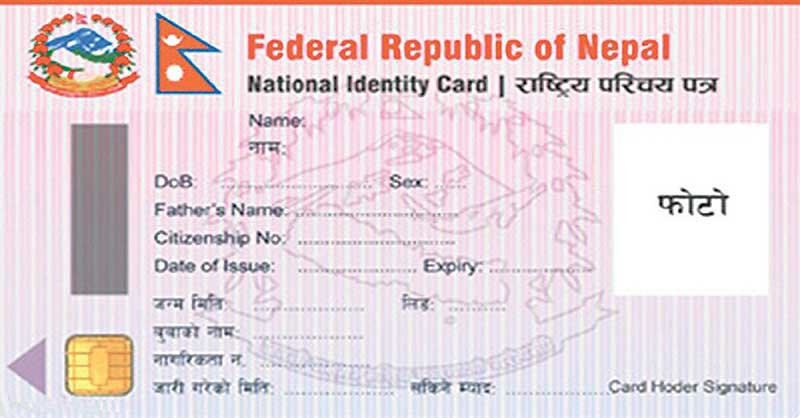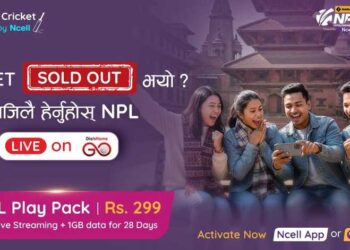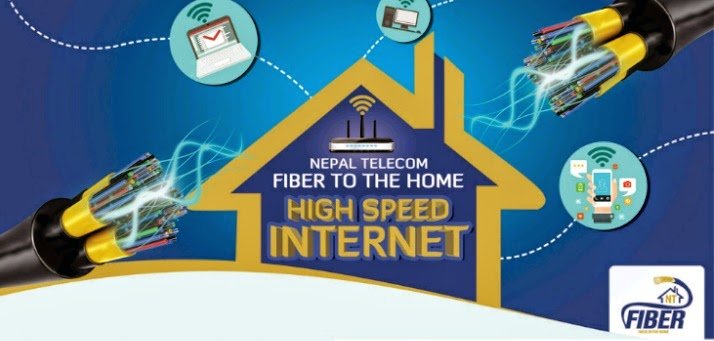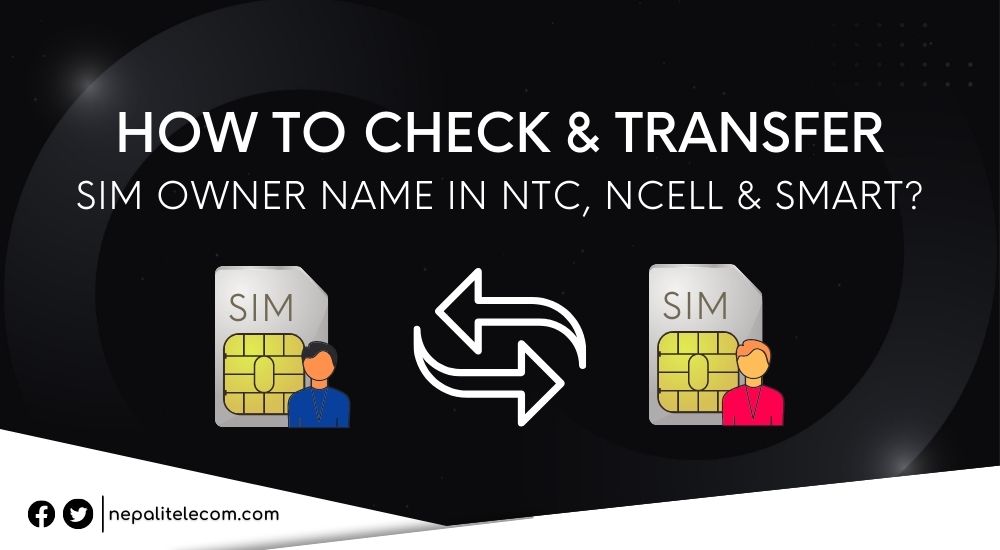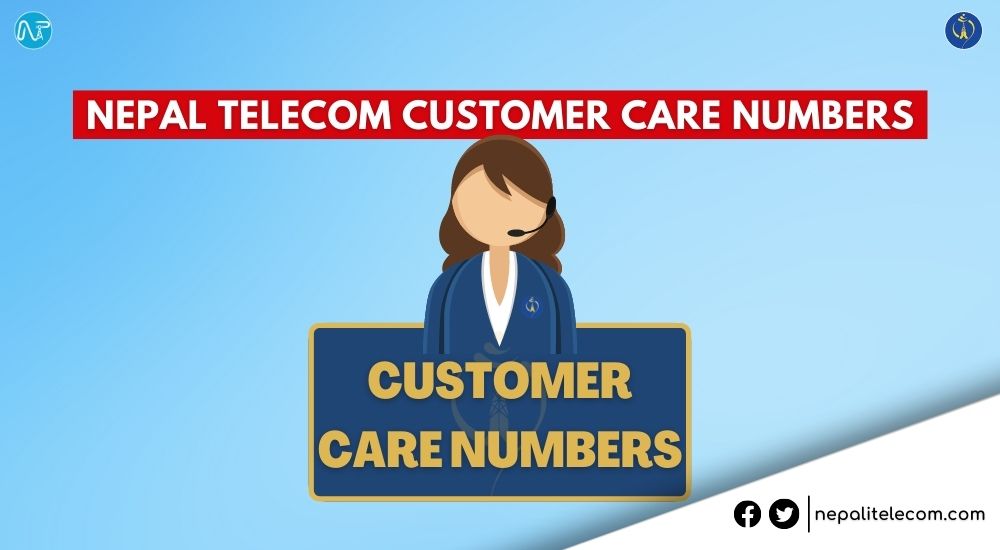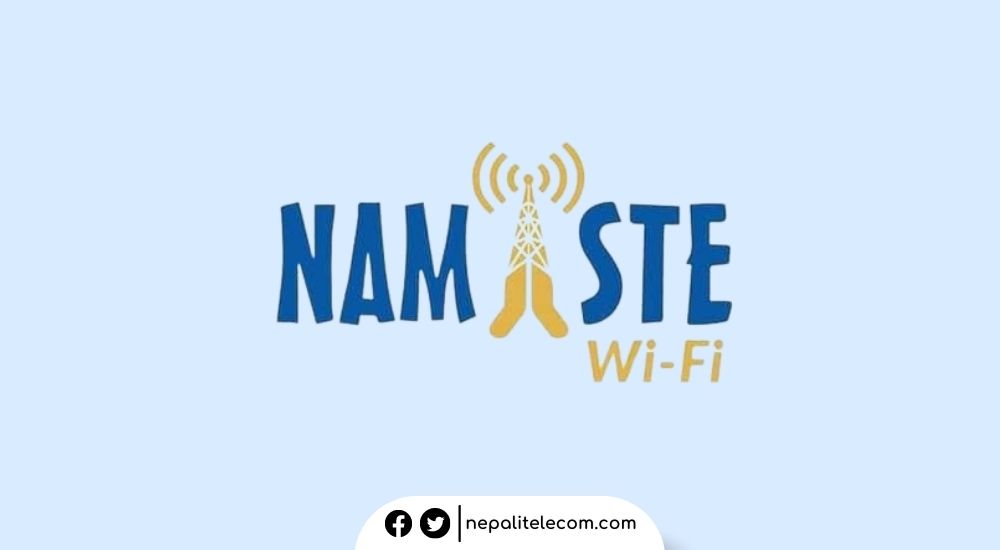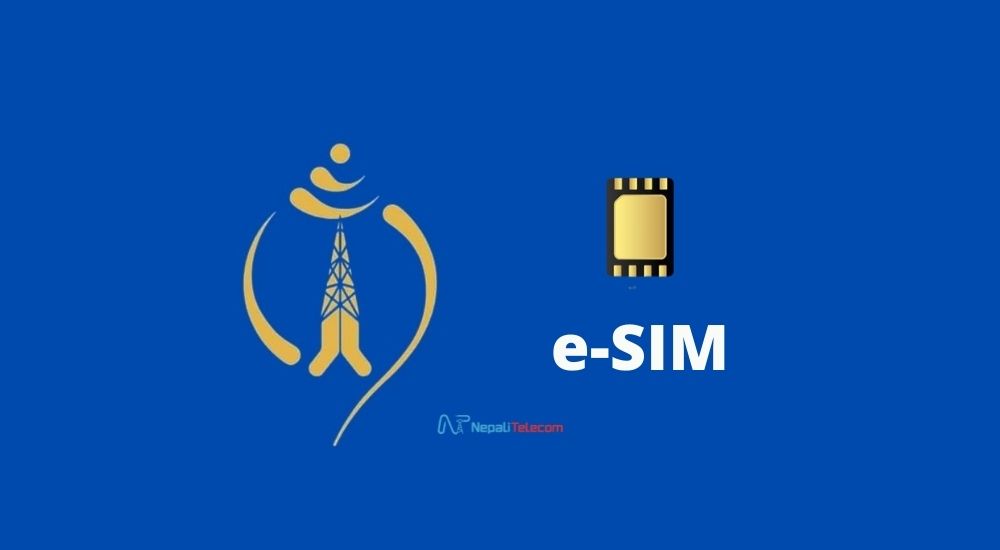- The government of Nepal has begun issuing National ID card (NID) or Rastriya Parichaya Patra issuance to eligible citizens..
- Smart and digital, these cards are federally distributed and carry user data on a chip..
- So, here in this post, we answer its Frequently Asked Questions (FAQs), how to apply to get National ID Cards in 2025.
The government of Nepal has begun issuing National ID card (NID) or Rastriya Parichaya Patra to eligible citizens. Smart and digital, these cards are federally distributed and carry user data on a chip. So, here in this post, we answer its Frequently Asked Questions (FAQs), how to apply to get National ID Cards in 2025, and many more. But before that, let’s start with how the government issues these digital cards.
The government announced the plan for National ID cards with biometric security in its 066/67 budget speech which the citizens could use to go to an election. Later on 2067/04/01, the government set up a National ID Management Center with central authority under the Home Ministry. Later, it merged with the Civil Registration Department. Now, the National ID card project proceeds under the Department of National ID and Civil Registration.
In another development, the government has mandated citizens to produce a National Identity Card to buy a new SIM card. This new policy comes into effective from Magh 01, 2081. And in another milestone, the NID card has been added on the Nagarik App, allowing both Android and iOS users to link their NID card on the popular app and access the information digitally.
Note that once fully implemented, these cards will replace citizenship and serve as a one-all for all the public services in the country. However, many are still curious about the necessity, uses, and benefits as citizenship still remains central to public services. In it, it calls for an in-depth look into several questions people are asking about these cards.
Also read: Nepal Government to Implement an Integrated ICT Policy
National ID Card in Nepal (NID) 2025
- When did the National ID Card Project Start in Nepal?
- What Are National ID Cards?
- How to apply for National ID Card online in Nepal?
- How Will They Be Useful?
- What Details Do the National IDs Store?
- Who is eligible for the National Identity Card?
- What Are The Benefits Of National ID Card?
- Where do we get National IDs from?
- What is The Chip On These Cards?
- How Secure Are They?
- Can You Get a NID Copy If You Lose It?
- What is The National ID Number?
- What Happens to the Citizenship after the National ID Card?
- Rules for photo revoked
- Link to apply for a National ID Card in Nepal
- How to Get National ID Card Number via SMS
- National ID Card Registration in Nepal (NID) Frequently Asked Questions FAQs
When did the National ID Card Project Start in Nepal?
The government kick-started the National ID project in Nepal with a successful experiment in 2075/76 by issuing it to the citizens of Panchthar and the employees from the Singh Durbar offices.
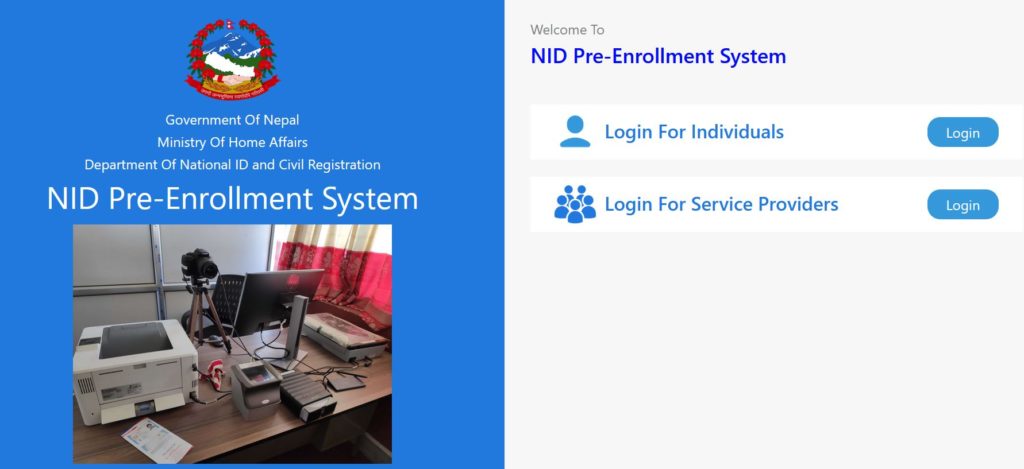
Bhagwati Devi Bhandari of 101 of Panchthar was the first to receive the National ID card from the then Minister of Home Affairs, Hon’ble Ram Bahadur Thapa. Now, the government plans on issuing these cards to all eligible citizens in 3 phases. Let’s learn more about National IDs in detail below.
Now, let’s cut to the chase and bring to you Frequently Asked Questions about National ID cards and answers to them.
Did you know? You can register your voter ID lost online
What Are National ID Cards?
National ID Cards are digital cards that hold a bearer’s personal and biometric data on a chip. These are federally distributed and will be central to citizens’ authentication and public services in the future.
How to apply for National ID Card online in Nepal?
You need to follow the steps below to apply for your National ID card online in Nepal:
- Visit this link for the NID Pre-Enrollment System.
- Click on Login For Individuals.
- Enter your mobile number.
- You will receive an OTP on the same mobile number.
- Enter the OTP, and click on New Enrollment.
- Fill out the online form with your personal details such as your First, Middle, and Last name, Date of Birth, Type of Citizenship, Citizenship number, Gender, etc. Fields with asterisk mandatorily require data.
- Click on Next and then on Ok.
- Now, fill out your Contact Details such as your province, district, ward number, etc. If both your permanent and temporary addresses are the same, click on “Copy Permanent Address…“.
- Click on Next and enter your Family Details such as your father’s name, mother’s name, permanent address, and spouse’s details if applicable. Click on Next.
- Now, you come to the Appointment tab. Choose province, district, local level, ward no., and location for submitting biometrics, and you get the nearest date for the appointment. Enter province, district, local level, and location for biometrics. For biometrics, you need to choose District Administration Office (DAO), and in the Biometric Location, choose the District Administration Office (DAO).
- Click Next, You now see the preview. Check all the information, thenSubmit and download the PDF which stands as proof of your online registration. Take the PDF to the DAO office and submit your form. You will get a date for your biometrics. Remember that you need to carry your citizenship on your physical visit. During your biometrics, your fingerprints of ten fingers, face, and iris are scanned and recorded. You then get a document with a unique National ID Card number, your photo, and other details. You also get a message telling you that your application for NID has been approved. When the card is printed, you get a message with your number. Then, you can collect your National Identity Card.
If you don’t get any location while filling out the detail in the Biometric tab, you get a pop-up saying Can Not Continue. In such a case, choose District Administration Office not the local government. and for location, again choose District Administration Office and proceed
How Will They Be Useful?
Once all the citizens receive these cards, they will be useful for all the public services a citizen receives. For eg.,
- These cards carry details relating to birth, date, migration, marriage, divorce, etc.
- Be useful in verifying social security benefits
- Store citizens’ details and integrate them for public existing and future services offered by the government.
What Details Do the National IDs Store?
A National ID carries essential information of the bearer for authentication. This includes personal details such as:
- Name, Surname,
- Date of Birth (DoB), Caste, Sex,
- Name of Father and Mother,
- Type of Citizenship,
- Name of Husband, Wife, Grandfather, etc.
Likewise, it also stores one’s biometric details like:
- The fingerprint of ten fingers
- Iris (Eye)
Besides, it carries other characteristics such as:
- A unique identity number
- Photo
- Nationality
- Signature
- A chip
Did you know that now, Nepal’s Election Commission allows citizens to make their Voter ID card using the National ID card number.
Who is eligible for the National Identity Card?
To systematically issue these smart cards, the government has formulated various strategic action plans. Such as the Strategic Action Plan for the National Identity Scheme, 2075, and another action plan to collect details of people with citizenship. That means, to obtain a National ID card in Nepal, a citizen must carry Nepali citizenship.
Besides, the candidate must be at least 16 years of age and must apply to the administration or the officer as prescribed by the DoNIDCR. While doing so, the candidate must submit the fingerprint of 10 fingerprints, a digital photo, a digital signature, and other personal and biometric details.
What are the requirements for a National ID Card?
You will need the documents below to get your National ID Card:
- Full Certificate of Nepali Citizenship
- Full certificate of migration in case of migration (if the address is different from the permanent address mentioned in the citizenship)
- In the case of marriage, if the name of the husband or wife is disclosed in the citizenship, the same certificate, otherwise, marriage registration, proof of marriage / complete certificate of proof of relationship.
- In case the date of birth is not disclosed in the citizenship certificate, official proof of the date of birth (birth registration, educational certificate, passport, pension lease)
- Other documents confirming details
Don’t miss: Smart City in Nepal | More ICT Infrastructure Needed
What Are The Benefits Of National ID Card?
As we mentioned above, National ID cards stress providing citizens with public services and bring a host of benefits to the cardholders. These include:
- The cards serve as a national ID
- Work as a voter’s ID.
- As a medium to receive all public services
- For social security benefits
- To ensure the safety of a citizen
Where do we get National IDs from?
Currently, government agencies are collecting individual data from eligible citizens for National IDs. Once, these cards are prepared, they are issued from the District Administration Office (CDO) of the concerned district or from the venues as designated by the DoNIDCR.
What is The Chip On These Cards?
The National IDs are digital cards that have a chip containing an individual’s personal and biometric details hence “smart”. Aside from containing vital personal and biometric details, the chip also contains the individual’s PAN, Driving License, and other information.
Check out: NTA to allow SIM purchase without carrying Citizenship and documents
How Secure Are They?
National ID cards are as secure as they can be. They come with a chip and the data are securely stored at the government servers. Only in emergency conditions, can agencies check into your personal details if allowed by the law.
Can You Get a NID Copy If You Lose It?
Yes, there is a provision that allows you to get a copy of your National ID if you lose it or become useless for some reason. For this, you must visit a concerned local body seeking a recommendation for a copy of your National ID card. Once the officer verifies it, you will be eligible to receive a copy of your card from the District Administration.
What is The National ID Number?
It is one of the most asked questions. The National ID number is the unique sequence of numbers specific to each National ID card. When you receive your card, you get a unique code that will correspond with your card. It is also called an Individual Unique Number.
Check out: Nagarik App Features and Upgrades
What Happens to the Citizenship after the National ID Card?
It is certain that National ID Cards will override citizenship cards one day. But for now, both are constitutionally approved and carry significance of their own. They will both serve their own benefits till the government decides to act otherwise.
Rules for photo revoked
On 2081 Ashoj 15, the Nepal government revoked the decision that required citizens to mandatorily remove ornaments, Nepali traditional caps (Dhaka Topi), etc. while taking photos for the National Identity card. The decision follows criticism from the public that the rule was detrimental to preserving the uniqueness of the Nepali identity.
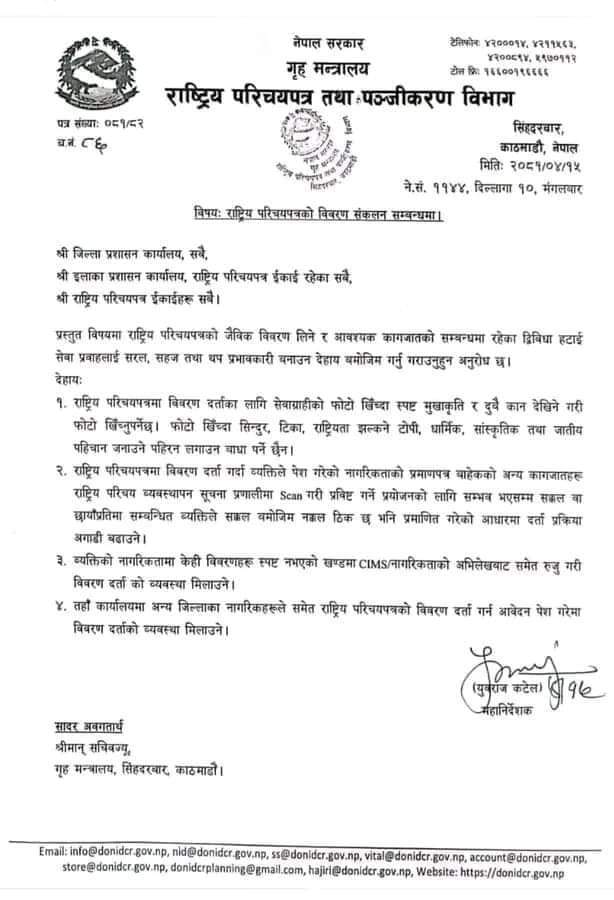
From now on, Nepali citizens may choose to wear Nepali Dhaka topi, tika, or ornaments that reflect unique Nepali traditions. It has also been ruled that citizens of a different district can also apply for the National ID card.
Link to apply for a National ID Card in Nepal
You can apply online for pre-enrollment of your National ID card from nidmc.gov.np/PreEnrollment. For that, you need to input your mobile contact on which you will receive an OTP code. Once you insert it, you can fill up the form and visit your designated office for further procedures.
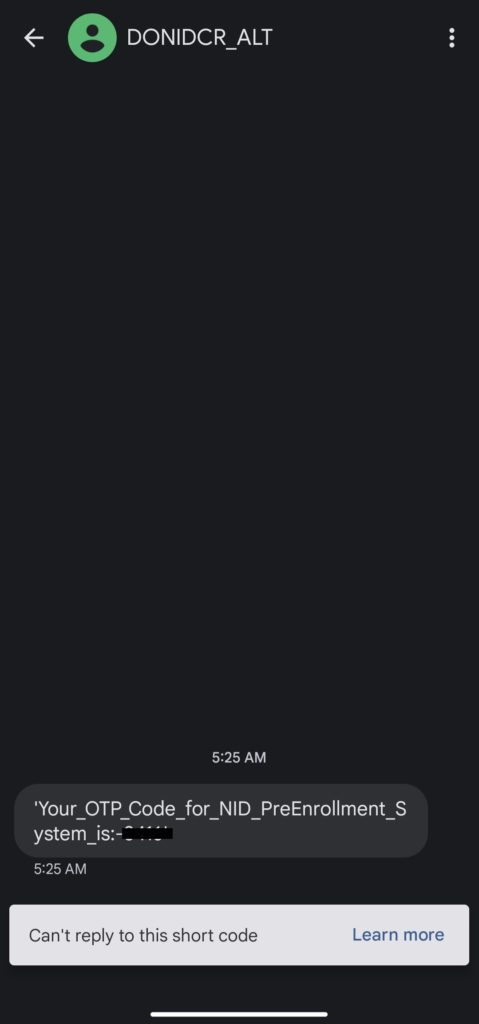
How to Get National ID Card Number via SMS
The government has made National ID cards mandatory for e-passports, and the government is likely to tag them to multiple other services in the coming days. And if you have registered yourself for the National ID Card, you may probably have your unique ID number. In case you have not, you can get it easily via an SMS.
To get your National ID Card unique number via SMS, you need to follow the steps below:
- Launch the Messaging app on your phone
- Type N <space> 16-digit application number.
- Send to 30001.
To illustrate, if your application number is 1234567890000000, then you have to type N 1234567890000000 and send it to 30001.
If you don’t get a message, you can contact 9851316034/35. You can also call at 9847346412 or 01-4200014 for more information. Or you can opt to call at the call center 01-5970449 to solve your NID Card issue
After this, you will receive a message containing your unique National ID number. If you still do not get it, you can contact the Depart over WhatsApp with different contacts for different provinces. If you live in Bagmati, or Gandaki province, 9851316034, for Lumbini, Karnali, and Far-West contact 9851316035. Remember that you need to send a screenshot of your confirmation page, voucher, and message response to your corresponding WhatsApp contact for further processing.
National ID Card Registration in Nepal (NID) Frequently Asked Questions FAQs
The national ID Card is a federally distributed identity card issued to the citizens of Nepal.
Yes. Online registration for a national ID card is available from www.nidmc.gov.np.
Physically, you get your National ID Card from the District Administration Office (DAO office).
A national ID card requires your phone number, full name, parent’s name, address, etc.
Yes. You will need citizenship for verification to create your National ID Card.
You will need your active mobile phone number for pre-registration for the National Identity Card.
You can go to the CDO office near you to apply for the National Identity Card.
Type N then a 16-digit PIN and send it to 30001 to know if your National ID card is printed. The format should look like this: N 97xxxxxxxxxxxxxx. It’s the digit you got while applying for your biometric.
National ID cards will be useful in a number of public services and facilities such as voting, however, citizenship will continue to play a more prominent role for now.
The plan is to phase out citizenship with the National ID Cards and that might happen eventually but it might take a few more years.
A National ID number is a unique individual number that relates to one unique card.
During your biometrics, your face, iris, and fingerprints are scanned and recorded.
At the end of your online application for the National ID Card, you get to download the PDF that includes all your details. Take it to the DAO office or ward (if applicable) and submit then your biometrics will be done. You get some documents and your NID card goes for printing.
When your National ID Card is printed, you get a message on your registered mobile. It’s the same number you submitted when you were applying online.
Generally, it takes 1 to 3 days to make a National ID card in Nepal after pre-enrollment.
These are the Frequently Asked Questions (FAQs) about National ID cards. If you have more to learn about it, do leave a comment below.


